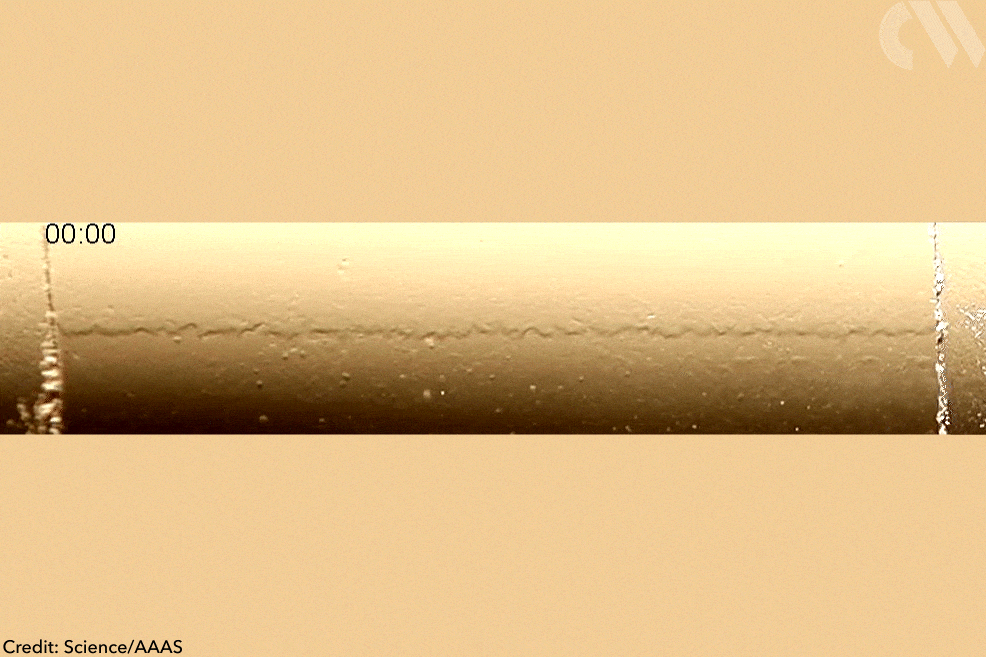Researchers have created a fluid, that can climb walls, has turbulent interfaces and shows strange phase separation dynamics.
The fluid is a mixture of two immiscible liquids – polyethylene glycol (PEG) and dextran – microtubules and kinesin, a molecular motor protein that can walk along the microtubules. The microtubules sit in the dextran phase, where they are continuously moved by the molecular motors. This creates chaotic flows, which manifests in unusual behaviour at the liquid–liquid interface.
In a mixture without kinesin that has been shaken, PEG droplets coalesce slowly. At intermediate kinesin concentrations, they coalesce faster. At the highest kinesin concentrations, the droplets become active, incessantly merging and breaking apart again – an effect similar to a hot thermal bath. The molecular motor also creates an interface with undulations and waves large enough to be seen with the naked eye.

The mixture climbs up walls several hundred micrometres above the equilibrium capillary rise as the microtubule bundles align themselves with the wall. While this behaviour is similar to a superfluid like liquid helium, the underlying physical reasons are very different.
The fluid’s unusual properties could allow scientists to study how an active phase influences the behaviour of a passive one and how phase diagrams are affected by microscopic mechanical activity. Mechanically driven interfaces could also be used for creating a new class of soft active matter, the researchers behind the study write.